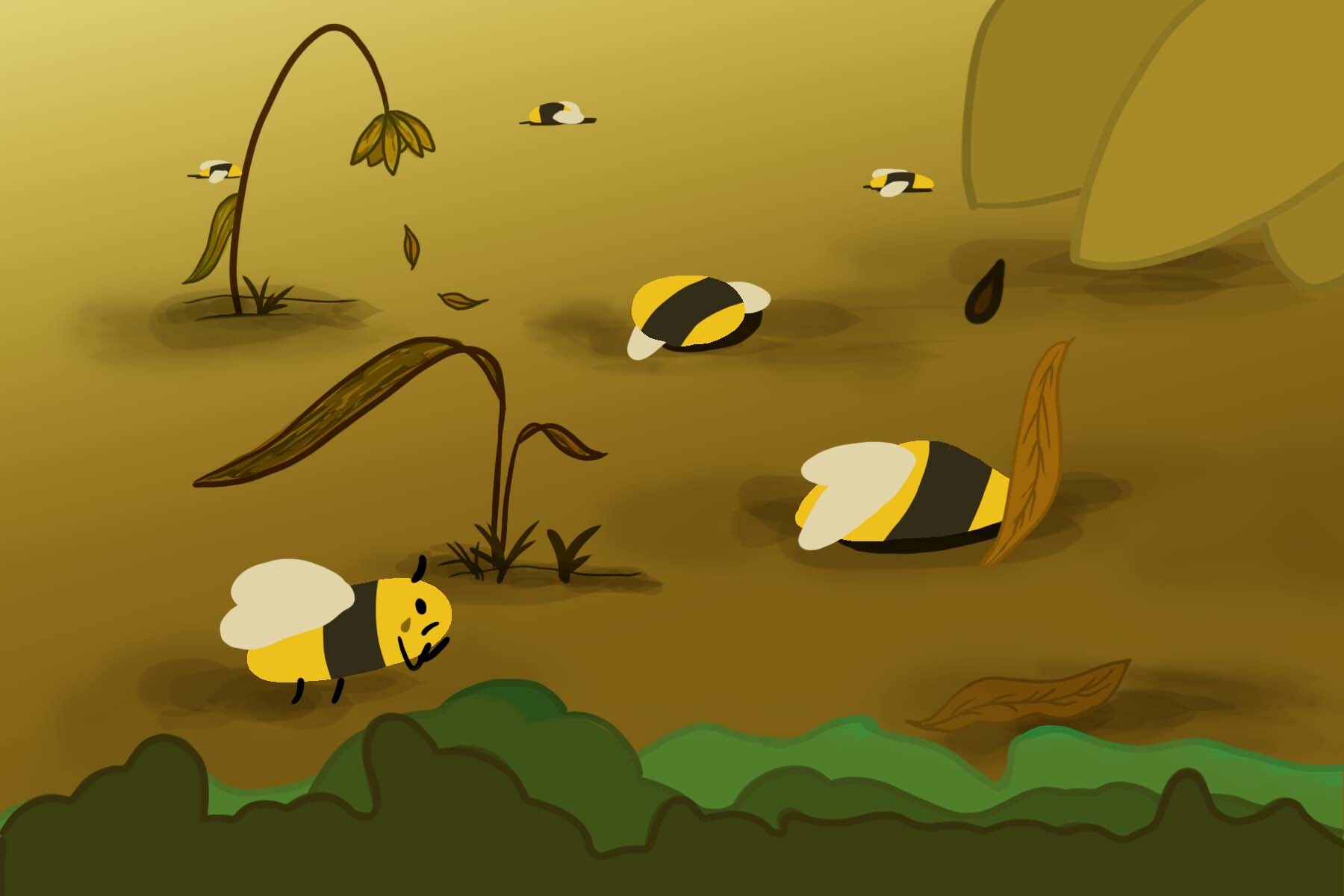The movement to “Save the Bees” gained large amounts of traction online. It’s a good cause, too, since bees are an integral component of both our economies and our ecosystems. Without them, we’d have to say goodbye to a third of all crops and 80% of all flowering plants, including blueberries, almonds and apples. Given that beekeepers reported over 40% of all honey bees died off from 2019 to 2020 and deaths occurred year-round instead of being concentrated in the winter, it’s pretty safe to say that something is going on with the bees.
That’s probably why we often see environmental groups telling us to support beekeepers and buy local honey — and there is a point to such simple activism. But despite their prominent place in various environmental causes, honey bees are not in danger of extinction. At least, not the honey bees most people think of.
Despite fluctuations stemming from a number of factors, including parasites and problems with maintaining the health of queen bees, the number of honey bee colonies and their overall populations have remained relatively stable in the past couple of decades. Pollinators overall are on the decline, not just domesticated honey bees. Instead, to understand all the details surrounding this great pollinator crisis, we have to look at the endless diversity of bee species.
As it happens, most bees are fine. Of the thousands of species that live in North America alone, a good majority aren’t too badly affected by environmental degradation. Multiple species are, in fact, currently endangered or at risk of becoming endangered in the future. None of these species are domesticated. They don’t live in farms or hives, and they don’t necessarily produce honey. Instead, these wild and native bees exist in relative solitude. Beyond the immediate impact on us, though, these wild bees are also significant to local ecosystems and their biodiversity. Plenty of wild bee species are highly specialized, focusing on a handful of plants that grow in their native habitats.
Their specialized and solitary nature renders wild bees relatively fragile, and human activity, in combination with several other factors, like stress, parasites and poor nutrition (but not the colony collapse observed by farmers), resulted in the harsh crisis we see in the present. Land fragmentation disrupts the ability of wild bees to access plants and, for some species, their ability to seek nests. Ironically, so does farming, thanks to the extensive use of pesticides over vast fields and the heightened popularity of monocropping, which drastically reduces biodiversity.
Unfortunately, most of the attention still falls onto domesticated honey bees, which aren’t native to the United States and aren’t as integral to the environment as some suggest. Yes, they provide us with the most honey, but they’re far from the most efficient pollinators when it comes to most plants, including important crops; wild honey bees and bumblebees often outperform the European honey bees that farmers typically use. Since pollination is key for countless crops, I’d argue that domesticated honey bees are not the stars of our ecosystem as much as they are the supporting characters.
Domesticated and managed bees can’t replace wild bees, either, and they can sometimes worsen already declining wild bee populations. On top of that, they might even be displacing other pollinators both in the U.S. and in their native habitats back in Europe. Furthermore, while native and honey bees can coexist in the same fields, honey bees are also known to be quite territorial, occasionally outcompeting their wild equivalents and spreading viral diseases and parasites.
But even if the popularity of domestic honey bees might not be bad for the environment, they are stealing the spotlight. Because of the misinformation surrounding media reports on bee populations, sustainability efforts that focus on bees need to take into account the vast diversity of insects and pollinators instead of treating them like a one-size-fits-all model.
Thankfully, there are conservation efforts dedicated to wild bees — they’re just a touch harder to find. That makes sense; the image of human-animal symbiosis is much easier to sell than that of the independent and lesser-known creatures that end up doing most of the heavy lifting.
Just because bee species overall aren’t in decline now doesn’t mean they aren’t suffering, nor does it mean they won’t suffer from continued environmental exploitation — though some have tried to spin the situation to suggest that is the case. At the risk of sounding overdramatic, if domesticated honey bees succumb to the same drastic declines in population as their wild counterparts, the effects would be felt across the planet.
Domesticated honey bees still play an important role in our society. Besides the fact that they make honey, which tastes good, they are agricultural pollinators that provide a priceless service to anyone who, well, needs food. Additionally, their preference for more densely packed fields (in comparison to wild bees, which have no such inclination) bodes well for the farmers and other agriculturalists who invite beekeepers to their fields to pollinate their plants.
Their general resilience also fails to disprove the negative effects of climate change, nor does it indicate that there isn’t any need to advocate for their well-being. It only means that beekeepers are doing their due diligence in the increasingly time and energy-consuming effort to mitigate the effects that climate change has on their colonies — something that is hardly sustainable, either economically or environmentally. Additionally, plenty of sustainability efforts — like growing native, bee-friendly plants and using integrated pest management systems instead of pesticides — help bees whether they are wild or domesticated.
As such, the greater importance of wild bee species doesn’t mean that there’s anything wrong with supporting sustainability efforts centered around domestic honey bees, which are strongly affected by the effects of warming temperatures and are just as susceptible to habitat fragmentation, decreases in crop diversity and the exorbitant use of pesticides as any other insect.
Regardless of which species we’re talking about, it’s clear that something needs to be done about the environment. The “Save The Bees” movement, as it exists, might miss some key details, but it’s no less important in the wake of a constantly changing climate. Besides, we’ve already seen cases in which bee populations improved at least by a little; as complicated and messy as our current situation is, there’s still time to bounce back.

















